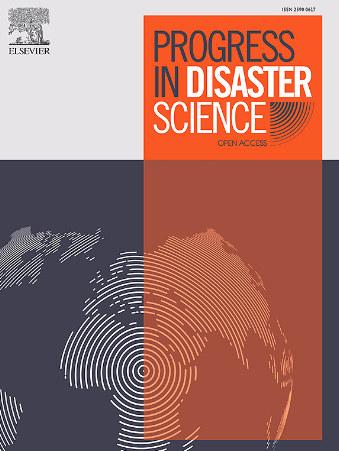基于卫星的洪水制图和社会经济风险分析的综合框架:以泰国为例
IF 3.8
Q3 ENVIRONMENTAL SCIENCES
引用次数: 0
摘要
本研究介绍了一种监测洪水和估计泰国社会经济影响的新方法。该方法利用了地理空间数据的进步,采用了在谷歌地球引擎平台上开发的两个基于web的应用程序。这些工具提供了对省级大量卫星数据的用户友好访问,包括洪涝地区、夜间光照密度、干旱指数、降雨量、农田和城市地区。该研究还将这些基于卫星的指数与2018年至2022年的官方省级GDP数据合并,使用四种机器学习算法对社会经济影响进行实证分析。随机森林(Random Forest, RF)对GDP的预测能力最强(r²值为0.912)。特征分析方法发现,城市淹水面积占比是预测省级GDP最显著的变量之一。RF预测模型还用于对2018-2022年期间进行反事实模拟,假设没有洪水事件的情景。这种方法有助于在没有洪水的情况下确定理论上的国内生产总值,从而能够计算与洪水有关的经济损失,平均占国内生产总值的0.945%。该研究的分析框架以其成本效益而著称,利用了可公开获取的数据和开源软件包,使其高度适用于各种发展中国家。本文章由计算机程序翻译,如有差异,请以英文原文为准。
An integrated framework for satellite-based flood mapping and socioeconomic risk analysis: A case of Thailand
This study introduces a novel approach to monitoring floods and estimating socioeconomic impacts in Thailand. The approach leverages advancements in geospatial data, employing two web-based applications developed on the Google Earth Engine platform. These tools provide user-friendly access to a vast array of satellite data at the provincial level, including flooded areas, nighttime-light density, drought index, rainfall, cropland, and urban areas. The study also merges these satellite-based indices with official provincial GDP data from 2018 to 2022 to empirically analyze socioeconomic impacts using four machine learning algorithms. The result obtained from Random Forest (RF) demonstrates the highest predictive power for GDP forecasting (r-squared value of 0.912). Feature analysis methods identified the proportion of flooded urban areas as one of the most significant variables in predicting provincial GDP. The RF prediction model was also employed to conduct counterfactual simulations for the period 2018–2022, hypothesizing a scenario devoid of flood events. This approach facilitated the determination of a theoretical GDP value in the absence of floods, thereby enabling the calculation of flood-related economic losses, which averaged 0.945 % of GDP. The study's analytical framework, notable for its cost-effectiveness, leverages openly accessible data and open-source software packages, making it highly applicable to various developing countries.
求助全文
通过发布文献求助,成功后即可免费获取论文全文。
去求助
来源期刊

Progress in Disaster Science
Social Sciences-Safety Research
CiteScore
14.60
自引率
3.20%
发文量
51
审稿时长
12 weeks
期刊介绍:
Progress in Disaster Science is a Gold Open Access journal focusing on integrating research and policy in disaster research, and publishes original research papers and invited viewpoint articles on disaster risk reduction; response; emergency management and recovery.
A key part of the Journal's Publication output will see key experts invited to assess and comment on the current trends in disaster research, as well as highlight key papers.
 求助内容:
求助内容: 应助结果提醒方式:
应助结果提醒方式:


